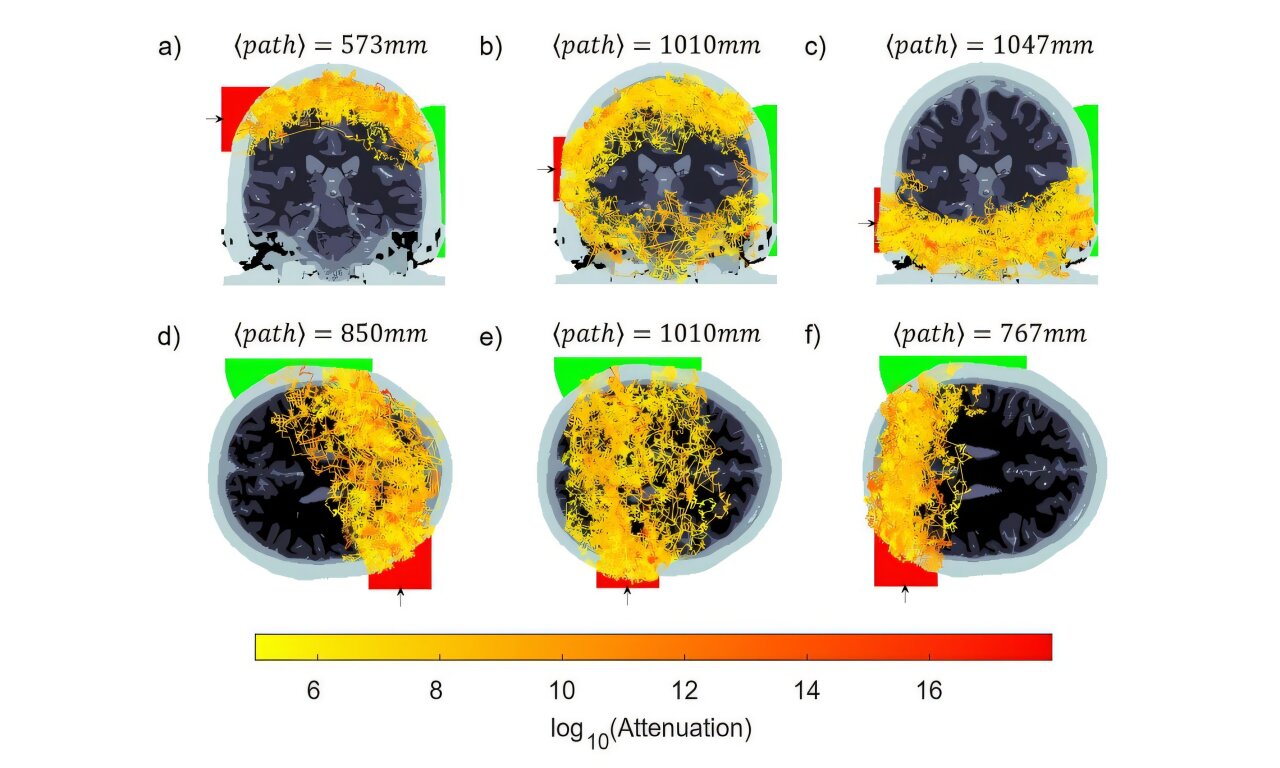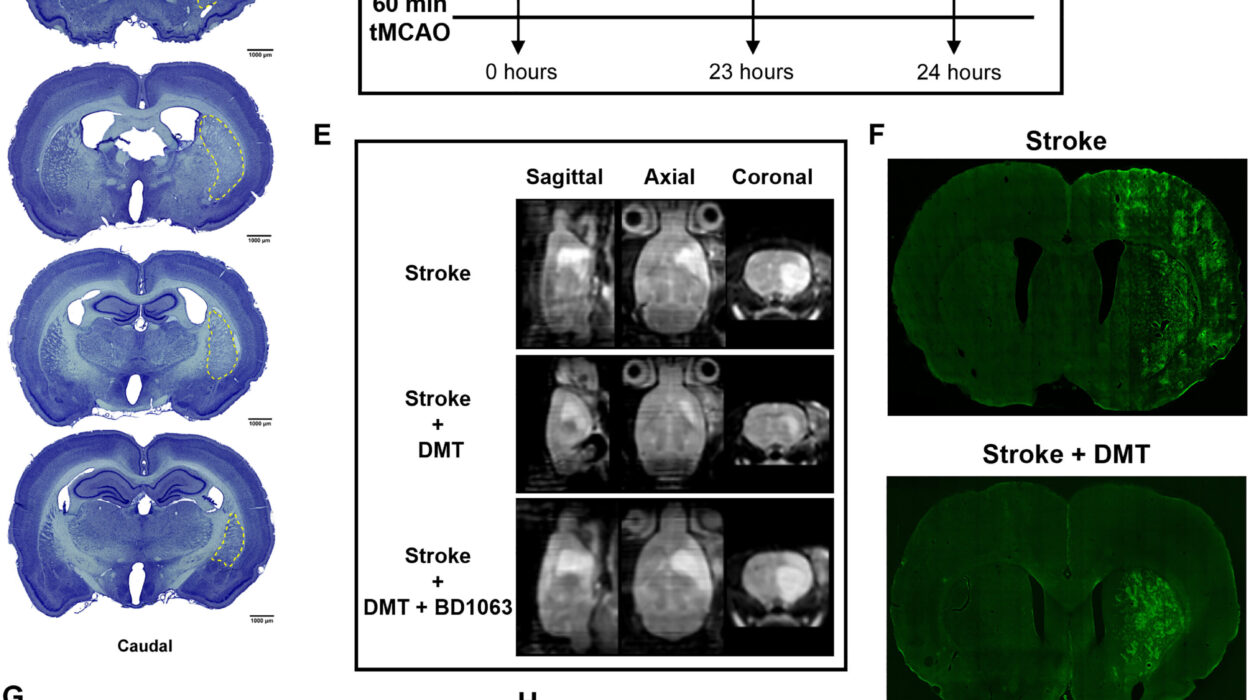In a dimmed laboratory in Glasgow, Scotland, a single beam of light did something once believed to be impossible—it passed through a human head from one side to the other, not just brushing the surface, but threading through skull, tissue, and brain to emerge, barely detectable, on the opposite side.
For decades, neuroscientists have dreamed of peering deeper into the brain without the need for massive machines or invasive procedures. They’ve long relied on a technique called functional near-infrared spectroscopy, or fNIRS, which uses near-infrared light to track blood flow and infer brain activity. But fNIRS has a stubborn limitation: light simply doesn’t penetrate far into the brain. Just a few centimeters in, and it scatters, absorbed or deflected long before it can reach the deeper structures that govern memory, emotion, or motor control.
That’s why this new study from researchers at the University of Glasgow, published in Neurophotonics, is generating a quiet but powerful wave of excitement across the neuroscience community. For the first time, scientists have detected photons—particles of light—that passed not only through brain tissue, but across the entire width of the adult human head.
And they did it using nothing more than carefully tuned lasers, exquisitely sensitive detectors, and a bold sense of scientific curiosity.
A New Path for Light
The experiment itself reads like science fiction turned real. Researchers aimed a pulsed laser beam at one side of a volunteer’s head and waited. On the other side, they placed a detector—an optical sentinel trained to catch the few photons that would survive the long, chaotic journey through skin, bone, blood, and brain.
They weren’t expecting many. In fact, the odds of success were vanishingly small. The human head is a dense and complex obstacle, where light scatters unpredictably, its pathways blurred by the layered architecture of tissues. But with patience and precision, and a setup that blocked out all external light, the team eventually caught what they were looking for—evidence that light had, indeed, made it through.
“It’s a tiny signal,” the researchers noted, “but it’s there.”
To ensure this was more than just a fluke, they turned to computer simulations, mapping how photons should behave in such an environment. The models matched the experimental data beautifully, confirming that the detected light had traveled not around, but through the head.
One of the most fascinating findings from the simulations was that light tends to find preferred routes—narrow channels of lower resistance guided by cerebrospinal fluid and other low-scatter regions. In essence, light was threading a needle through the brain.
More Than a Scientific Stunt
At first glance, this might seem like a highly technical accomplishment with limited application. After all, the current method isn’t exactly ready for primetime: it requires powerful lasers, expensive detectors, 30 minutes of signal collection, and subjects with minimal hair and light skin tone.
But beneath the technicalities lies a revolutionary idea—that we may have underestimated what light can do.
Until now, most researchers assumed that optical brain imaging would always be confined to the cortex, the outermost part of the brain. That’s why fNIRS has been limited to studying functions like language processing or sensory response—areas where brain activity occurs close to the surface. But what about the hippocampus, where memories form? Or the basal ganglia, which coordinates movement? These deeper structures have been mostly off-limits unless you have access to MRI or PET machines—bulky, expensive, and out of reach for many communities around the world.
The Glasgow team’s breakthrough cracks open a door to a future where light-based tools might go deeper—not metaphorically, but physically—into the brain.
A Future Reimagined
Imagine portable brain scanners that can track cognitive decline from the comfort of a patient’s home. Tools that can detect the early signs of a stroke in a remote village. Monitors that follow traumatic brain injury recovery without the need for a hospital visit.
This study isn’t there yet—but it paves the path.
The research encourages the neuroscience and bioengineering communities to think bigger. Perhaps future fNIRS systems could be enhanced with smarter algorithms, adaptive optics, or wearable arrays that take advantage of the brain’s natural light channels. Maybe instead of giving up on deep imaging, scientists will now be inspired to pursue it more aggressively.
It also redefines the philosophical boundary of possibility. For years, the assumption that light couldn’t pass through the whole head was taken as scientific gospel. But science moves not only by answers, but by questions—by refusing to accept limits until they are truly proven.
“We didn’t expect to get a signal,” the lead authors acknowledged. “But we asked anyway.”
A Glimmer of What’s to Come
The road to a practical device may be long. Current systems still rely on equipment too delicate for clinical settings. And the variability of human anatomy—hair, skin tone, skull thickness—will continue to pose technical challenges.
But light is persistent. And so is science.
This first glimmer of transcranial light detection is a beacon, not a fluke. It tells us that the frontier of optical neuroimaging is far from closed. With each photon that completes the journey through the head, researchers are reminded that even the darkest spaces in science can be illuminated—one particle, one idea, one breakthrough at a time.
And so, in a lab lit only by lasers and curiosity, the brain has given up another one of its secrets—not through force, but through finesse. Not by cutting or drilling, but simply by letting the light in.
Reference: Jack Radford et al, Photon transport through the entire adult human head, Neurophotonics (2025). DOI: 10.1117/1.NPh.12.2.025014






